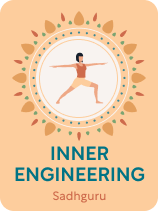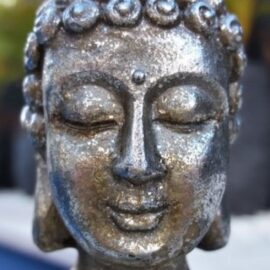

This article is an excerpt from the Shortform book guide to "Inner Engineering" by Sadhguru. Shortform has the world's best summaries and analyses of books you should be reading.
Like this article? Sign up for a free trial here.
Why is there so much suffering in the world? Are humans predisposed to be unhappy?
According to yogi master Sadhguru, suffering is the result of feeling separated from the outside world. At the root of this cycle of suffering is our deep unconscious knowledge that we belong in union with everything in the universe, but we’re not living that way.
Here’s how humans create their own suffering, according to Sadhguru.
We Create Our Own Suffering
Sadhguru says that as a species we’re suffering because we’re denying our oneness with the universe. Instead, we create illusions of separateness and division in all aspects of life. We’ve created boundaries for ourselves by categorizing everything—we decide things are good or bad, right or wrong, and so on. Although understanding the world this way is a survival tactic that helps us make sense of things, when we want to move beyond survival mode, it works against us.
On the most basic level, Sadhguru says, all humans just want to feel good, and everything else we pursue in life is a means to that end. And yet we tend to be plagued with discontent. When we attain one thing, we experience fleeting pleasure, and then we fall into dissatisfaction again and start seeking the next remedy. This is an endless cycle of suffering. According to Sadhguru, this is because we’re seeking contentment from things outside of ourselves, when the source of the discontent lies within us.
| The World as We Know It Is an Illusion In yogic philosophy, this concept of the illusion of separateness is referred to as maya. In the broadest sense, it refers to the entire world we perceive with our senses being illusory—meaning, everything we can see and hear and touch doesn’t actually exist in the way we perceive it. Which in turn means everything we think we know is false. There are six major illusions, and to achieve enlightenment you must see through them: Space: We’re not really individuals in any specific space—we are technically part of the whole field of consciousness, so we are everywhere. Time: The past and future don’t actually exist. All that ever exists is in the present moment. Attachment: Always wanting and pursuing more in life causes us to focus on something other than what is here and now. Knowledge: As the concept of maya indicates, almost everything we think we know is actually false. We know very little in the way of absolute truth. Human creativity: All creativity is from the same source—the creative whole that is consciousness. Individual humans don’t have any other source of creativity. Fear: Fear is just the absence of love, and it’s used as a mechanism of control. When you realize that everything else is an illusion, you also realize there’s nothing to fear, and then you can access true love. |
According to Sadhguru, suffering results from our deep unconscious knowledge that we belong in union with everything in the universe but we’re not living that way. We’re unable to experience this feeling of “oneness” because:
1) We’re stuck in limiting patterns of thought: We’ve divided the whole world up into categories and judgments, and we live as though they’re facts, when they’re really just human constructs. For example, manmade ideas about race, gender, and morality create conflict and inhibit us from achieving our potential.
2) We believe we’re separate from others: Thinking of ourselves as entirely separate beings from everyone else encourages egocentrism and limits compassion. We must realize we’re all interconnected with one another on an energetic level.
3) We identify with our bodies and minds: Believing that you are your body or even your mind keeps you feeling trapped, restricted, and fearful of mortality.
Sadhguru emphasizes that you are neither your body nor your mind. You are the one who’s in charge of them. What we all really need, he says, is to move from being bounded by distinctions to feeling ourselves a part of the unbounded universe. This involves getting our bodies, minds, and energy in a state of optimal functioning, and thereby transforming the way we perceive ourselves and life. This is what yoga is designed to do.
(Shortform note: One of the guided meditations Sadhguru teaches, which is offered for free on Isha Foundation’s YouTube channel, involves repeating the phrase “I am not the body” as you inhale, and then as you exhale: “I am not even the mind.” This is repeated for approximately 10 minutes per day. As you practice this regularly, you should begin to become more aware of yourself as an energetic being, connected to the universal energy, and not separate from others. Indian guru Paramahansa Yogananda also says that kriya yoga changes your brain patterns, which allows you to break free of your normal limiting thought constructs, including the judgments and habits that are ingrained into your brain.)

———End of Preview———
Like what you just read? Read the rest of the world's best book summary and analysis of Sadhguru's "Inner Engineering" at Shortform.
Here's what you'll find in our full Inner Engineering summary:
- An introduction to the science of yoga and its transformative powers
- Renowned yogi Sadhguru's journey of self-discovery
- Why yoga is not meant to be an exercise or a way to get "fit"






